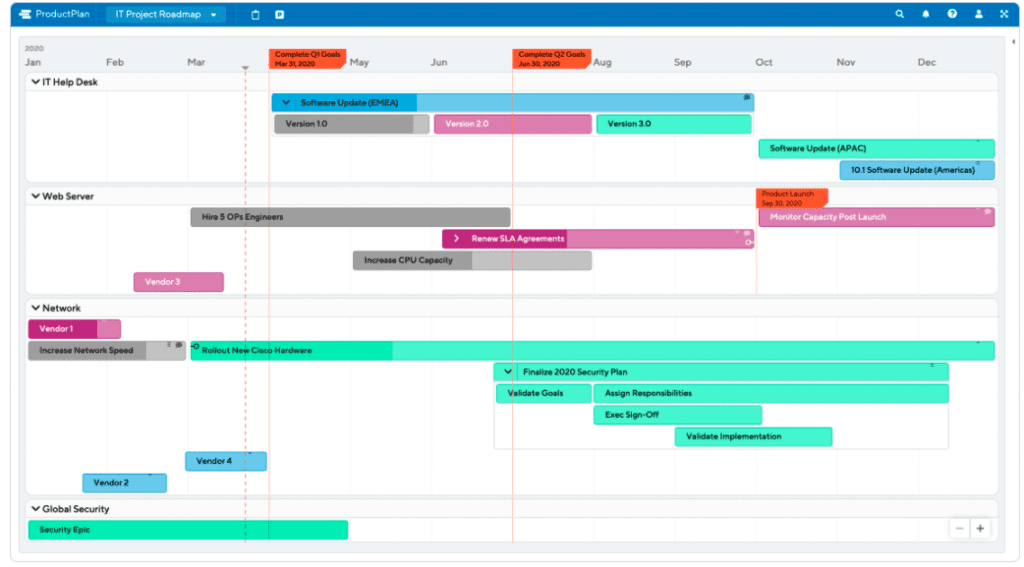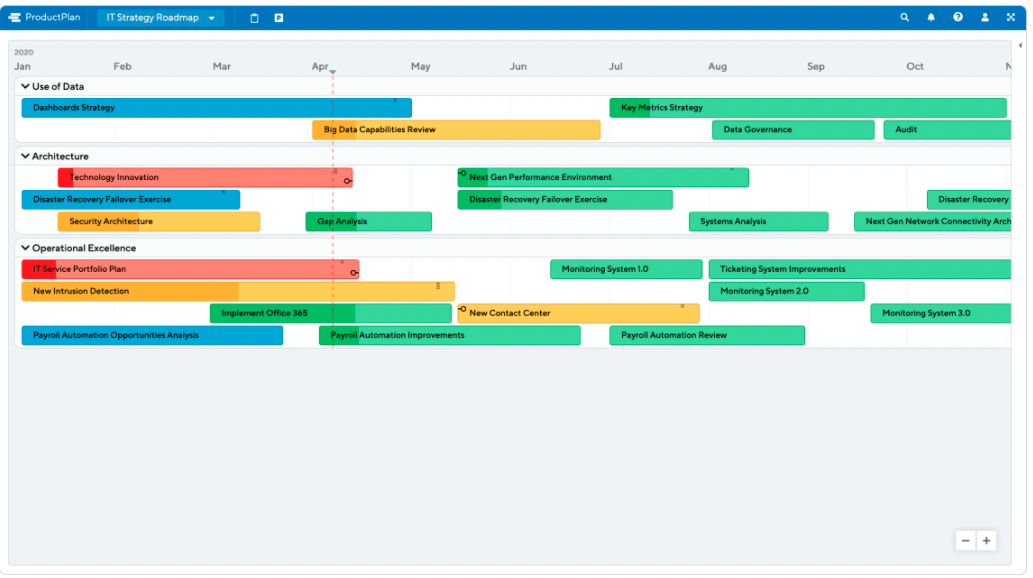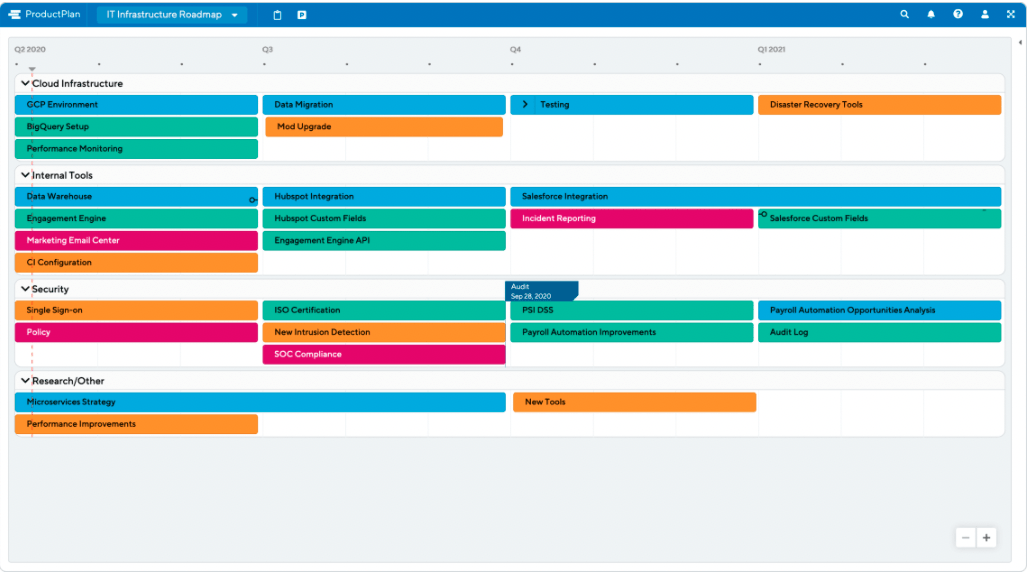In a previous post, we described best practices product leaders use to accelerate digital transformation. But no successful change for your product can happen in a product team vacuum. You’ll need help from several other departments to support your digital transformation, including IT.
So, in this post, we’ll share some strategies for enlisting the help of IT management to support your digital transformation. If you execute them successfully, these strategies can lead to other benefits as well, such as:
- A better working relationship with your IT team
- The implementation of proven processes for accelerating the development and release of new products and functionality
- Improved strategic alignment throughout your company
An Example of a Product’s Digital Transformation
In the broadest sense, digital transformation refers to an organization’s migration to digital solutions to improve its products or operations. The transformation could range from digitally transforming only one aspect of a business to a companywide transformation that fundamentally changes how the company operates. Here are a few common examples:
Digitally transforming a company’s internal operations
Example: Replacing the old process of employees saving files on their computers with a new cloud-based file management solution.
Digitally transforming a company’s customer-facing operations
Example: Replacing the customer support team’s traditional phone infrastructure with a cloud-digital contact center platform that includes web-based support via phone, chat, text, and social media channels.
Digitally transforming a company’s product
Example: Migrating an enterprise app maker’s product from a downloadable piece of software to a web-based SaaS application.
Because the example above involves digitally transforming a product, we’ll use it as our focus for this article. Here’s a brief background for our hypothetical scenario.
XYZ BI sells a business intelligence tool that helps enterprises merge data sets from different applications and online sources. The tool lets researchers and business analysts discover insights they might otherwise miss because the data sets are locked in two or more websites or apps that can’t communicate with each other.
The opportunity:
XYZ BI built its business intelligence software many years ago as an app that customers download and store onsite. At that time, client-side software was the norm. Far more people had Microsoft Office on CD than were licensing Office 365 and using those apps online.
But today, more business analysts are looking for web-based apps, not downloadable software, to accomplish their data-merging tasks.
The company’s product team has conducted market research on these changing trends. They’ve identified an enormous opportunity to appeal to newer analysts if they release a SaaS product.
The challenge:
Many years ago, XYZ BI built its business intelligence software as an app that customers download and store onsite. At that time, client-side software was the norm. Far more people had Microsoft Office on CD than were licensing Office 365 and using those apps online.
Migrating their product from a downloadable tool to a web app will require a lot of help from IT, including:
- Determining the bandwidth needs to ensure an excellent customer experience with the new cloud app.
- Creating the right customer SLAs to guarantee uptime, access to support, and other vital details.
- Ensuring the SaaS product meets the security requirements of its enterprise customers.
- Ensuring the app meets customers’ compliance requirements in heavily regulated industries, such as healthcare and financial services.
- It identifies the right cloud vendor (AWS, Azure, etc.) to house the production version of XYZ BI’s new web app.
- Developing an estimated cost for the IT aspects of the project.
Here’s how XYZ BI’s product team can make this a genuinely joint project—and get the best effort from IT.
3 Tips for Persuading Your IT to Support a Digital Transformation
The IT department plays a vital role in any company’s digital transformation. As a product professional leading a product transformation, you will need both strategic and tactical help. Here’s how to work with your IT management partners to give your transformation the best chances of success.
1. Treat IT management like a true partner (not a service provider).
Many business teams treat their IT departments as internal vendors, not genuine contributors to their big-picture goals. When they seek help from IT, these teams often give out only enough information about their plans to allow the IT staff to perform their specific tasks.
Consequently, these IT professionals might feel less valued contributors and more like service providers if you treat them this way. Not the best way to tap the commitment, creativity, and problem-solving abilities of your technology department.
You want to make your IT team feel like a full strategic partner for an undertaking as significant and complex as a digital transformation. Show them the “why” behind your plans—not just the “what” you’re asking of them.
Keep in mind, when it comes to a digital transformation, your IT department will have knowledge and experiences you don’t. Digital transformation is their area of specialty. Ask for their thoughts and expertise. Let them shine. Doing so also demonstrates your trust in IT, which goes a long way to making them feel appreciated.
2. Show them what the transformation could mean for the company.
You can make your IT partners feel even more committed to the initiative by sharing your market research and the opportunity your product team has identified. In our hypothetical example, the product team could show IT the new market segment a SaaS could capture. They could also quantify the opportunity: show IT how much additional revenue the web product could bring in.
In addition, you can accomplish several worthwhile goals by presenting evidence to IT about what this transformation could mean for your business.
First, you’re again showing trust in your IT management partners. After that, the development of trust will strengthen the relationship between your departments. It will also give IT more reason to feel invested in making the project a success.
You’ll also be helping the IT department justify the commitment of resources that this project will demand of them.
3. Share your plan to support digital transformation throughout the project.
Remember, one misstep teams make when enlisting IT’s help is to give them a list of tasks and deadlines. Therefore, for your digital transformation to succeed, you will need to continuously communicate with your IT partners. Moreover, you will also need to create dedicated roles or processes that will make their work easier.
When presenting your digital transformation idea to your IT team, you’ll want to show them that you’re here to help. That help could take several forms. For example:
- Work with your DevOps department to develop a plan and list of priorities to share with your IT management team.
- If your company doesn’t have a dedicated DevOps department, you can create a DevOps task force with members of product and development—and a slot open for someone from IT.
- If your product team uses a web-based app for your product roadmaps, you can invite your IT department to use the app as well. They might want to build an IT roadmap to capture the strategy behind their work on this digital transformation.
Lastly, do you want to show your IT partners that you’ve done some legwork to help them get started on this digital transformation? You can offer them templates that they can use to start building their roadmap in minutes. Finally, here are a few IT Roadmap examples:
Project roadmap template:

IT strategy roadmap template:

IT infrastructure roadmap template:





